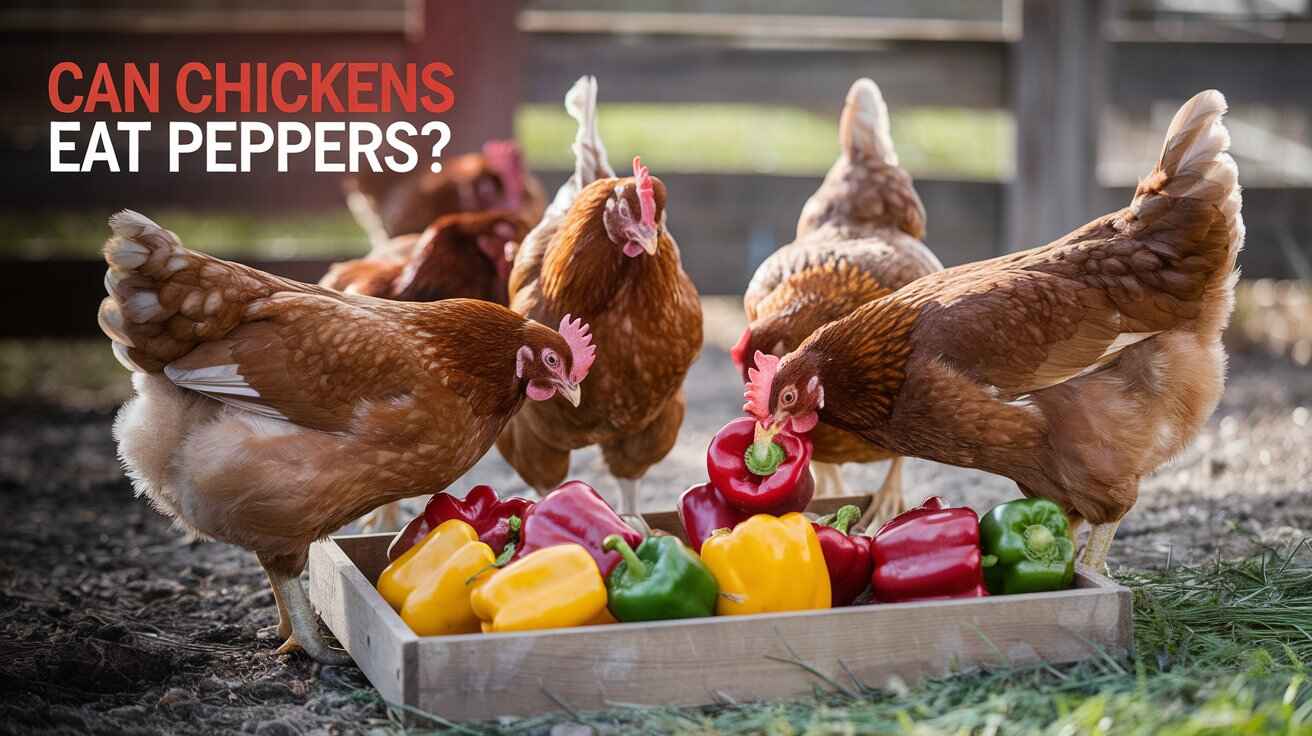Bell peppers are a versatile and tasty addition to your flock’s diet. These colorful veggies, whether yellow, red, or orange, are packed with nutritional values that can help support your chickens’ health.
As omnivorous creatures, chickens enjoy a variety of foods, making bell peppers an excellent treat. Not only are they safe to consume, but the ripe peppers offer the best nutrition, especially for improving the quality of eggs.
When feeding poultry, it’s important to include foods that don’t cause harm. Based on researched data, bell peppers are a great option. Regardless of their colour or ripeness, they provide an effective and nutritious snack.
I’ve found that offering chopped peppers as part of their diet keeps my flock active and healthy. Plus, it’s easy to create a fun recipe combining bell peppers with other plants or scraps for an extra bonus treat!
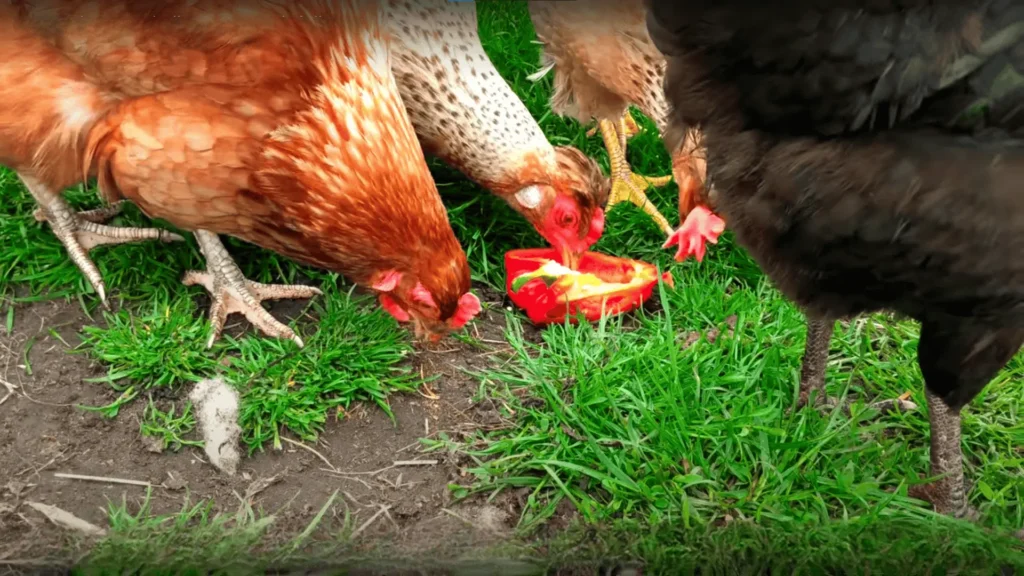
Table of Contents
ToggleCan Chickens Eat Bell Peppers?
Absolutely! Bell peppers are a nutritious and safe choice for chickens, offering plenty of health benefits. Their high levels of Vitamin A and Vitamin C contribute to improved immune function, better iron intake, and overall egg quality.
Studies have shown that including bell peppers as a supplement can help hens under heat stress, boosting their laying rate and the weight of their eggs. With their rich nutritional content, peppers are a simple yet effective way to support the well-being of your flock.
Why Feed Bell Peppers to Your Chickens?
Bell peppers are a fantastic addition to your chickens’ feed, offering a variety of nutrients to keep your flock healthy and strong. With 92% water, they make refreshing treats during the summer, helping your chickens cope with the heat.
Packed with carbohydrates like glucose and fructose, they also provide much-needed energy alongside regular chicken feed.
Beyond hydration and energy, bell peppers are loaded with vitamins and minerals essential for growth and development. Beta-carotene, especially in red bell peppers, is converted into Vitamin A, while antioxidants like Vitamin E support muscle function.
Additional vitamins, including B6 and K1, along with minerals like potassium, calcium, phosphorus, magnesium, zinc, copper, and manganese, make bell peppers a superfood for your flock. These nutrients ensure your chickens remain vibrant and productive.
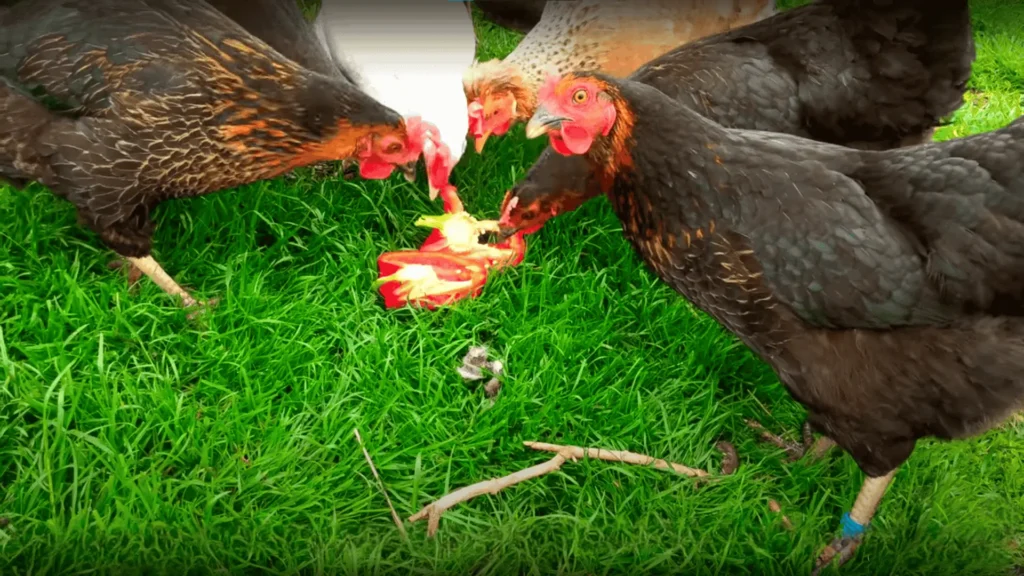
Bell Peppers as a Chicken Treat
Fresh red bell peppers are a perfect treat for your chickens, offering numerous benefits. Avoid using canned or pre-roasted peppers from the deli counter, as they can lose up to 25% of their Vitamin C content. For the best results, try growing your own peppers.
They’re easy to raise from seed and ensure the peppers are free from harmful chemicals and growth hormones. Simply cut the peppers in half or into smaller pieces, and set your chickens loose on them. For added nutrition, include bell peppers when you ferment their feed. This not only enhances their diet but also keeps them happy and engaged.
Choosing the Best Bell Pepper for Chickens
For the best health effects, fresh red bell peppers are the top choice for your chickens. They have the highest content of Vitamin A and provide 11 times more antioxidants, especially carotenoids, compared to green, yellow, or orange peppers.
Red peppers also contain twice the Vitamin C, making them a nutrient-packed option. Avoid canned, bottled, or dried peppers, as they lack the freshness and nutritional benefits that make red bell peppers an optimum choice for your flock.
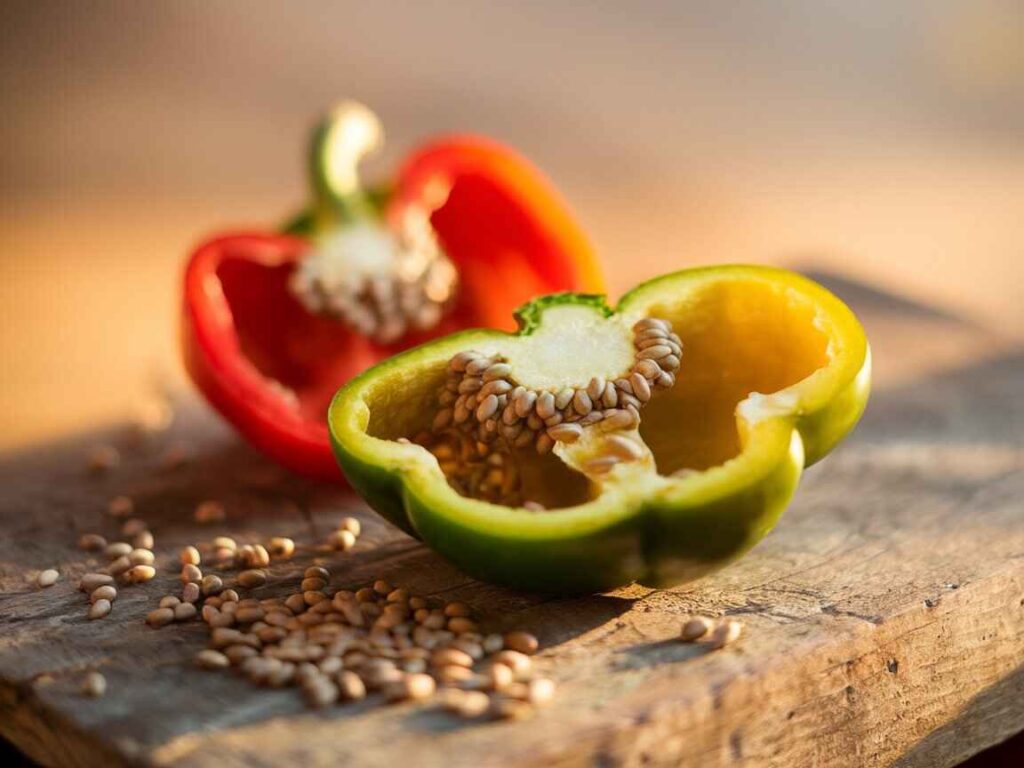
Are Bell Pepper Seeds Safe for Chickens?
Yes, bell pepper seeds, along with the core and fruit, can be safely fed to your chickens. They are packed with nutritional value and provide several health benefits for your flock. In my experience, these make an excellent treat, as they are both natural and healthy, ensuring your chickens enjoy their snacks while staying nourished. My flock loves picking at the seeds, and it’s an easy way to add variety to their diet.
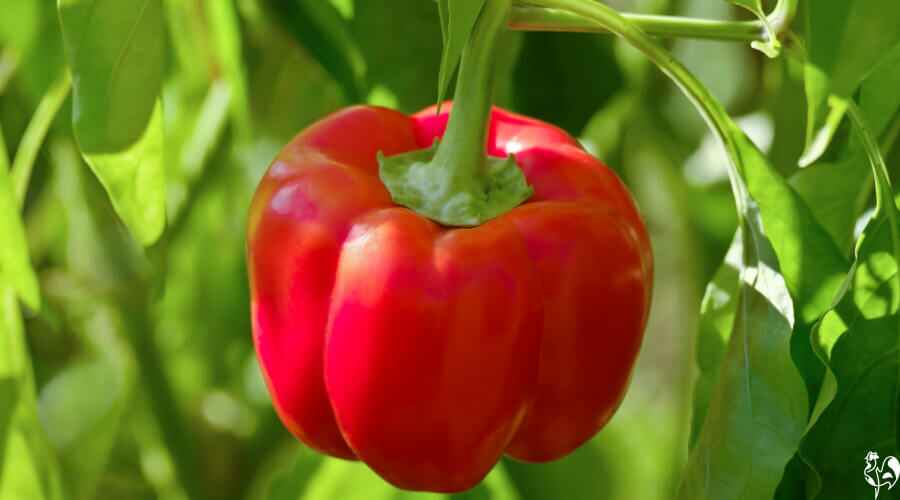
Avoid Feeding Bell Pepper Stems and Leaves
While the fruit of the bell pepper is a healthy snack for your chickens, the stems, leaves, and flowers are toxic and should never be included in their diet. These parts of the plant contain solanine, a natural substance found in the nightshade family, which includes tomatoes and potatoes.
Plants in this family produce solanine to combat pests and fungus, but if chickens or other animals ingest it, they can face serious health problems or even die. Keeping your flock away from these parts of the plant ensures they stay safe and avoid unnecessary harm.
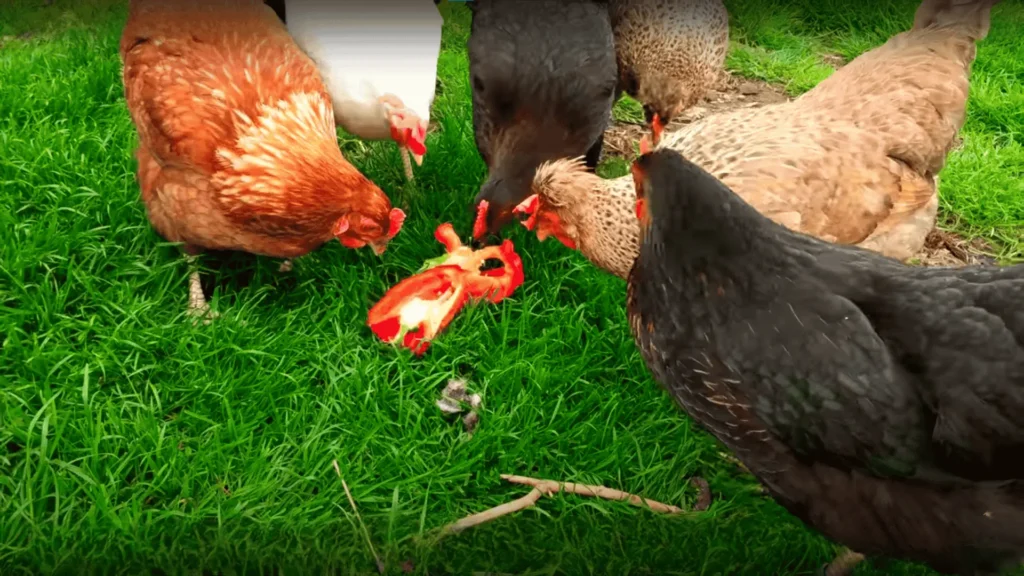
How Solanine Affects Chickens
When chickens ingest solanine, they can experience various health problems, including diarrhea, convulsions, paralysis, and neurological or respiratory issues.
The severity of these symptoms depends on the levels of solanine consumed. In small doses, the effects are usually minor, but in large quantities, it can become fatal.
To keep your flock safe, always avoid feeding them bell pepper parts that contain this harmful substance. Managing their diet carefully is essential to prevent unnecessary suffering.
Feeding Bell Peppers to Your Chickens
To feed bell peppers to your chickens, you can simply throw them whole into their cage or run, letting them peck at the fruit. For best results, cut the peppers in half before placing them on the ground, making it easier for your flock to enjoy. Alternatively, you can hang them, creating a fun treat that also helps them pass time.
While peppers are a great advantage for chicken health, remember that the plants, including their leaves, vines, and roots, are part of the Solanaceae or nightshade family. These parts contain solanine, which is poisonous and poses a real danger to your flock.
If you’re growing peppers, I’d recommend planting them away from your chickens’ run or using a fenced area to keep their inquisitive beaks safe.
Hot Peppers in the Chicken Diet
Hot peppers can be a great addition to your chicken’s diet, especially in the form of flakes. While the type of pepper doesn’t really matter, following research studies shows that fresh Tabasco peppers or other red peppers are a good choice.
Avoid using bottled sauce, as it contains too much salt, and liquid additives can create mould in the feed. You can dry peppers yourself, or follow the Italians by hanging them in a dry place.
If you don’t have fresh peppers, spices cabinet flakes also work well. Studies recommend adding 0.5% flakes for optimum results, but for practicality, you can mix about two teaspoons into the feeder hopper every few days. This method keeps your flock happy and adds potent benefits to their diet.
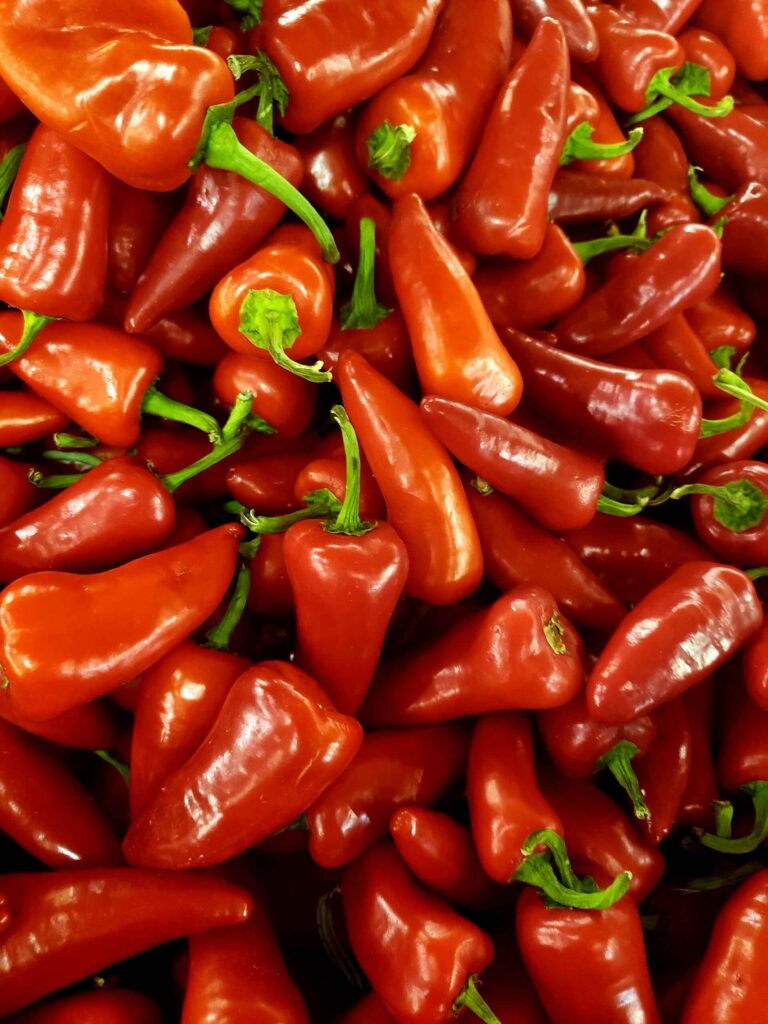
Hot Pepper Nutrition: What’s True?
There are many claims online about hot peppers, such as UK chilli and US chili, being able to cure everything from heart disease in humans to worm infestations in chickens.
While these stories are intriguing, it’s important to focus on the real nutritional benefits of peppers rather than relying on unverified information from the internet. Hot peppers can contribute positively to a diet, but always ensure their suitability for your flock.
Mineral Benefits of Hot Peppers for Chickens
Hot peppers offer significant benefits for chickens due to their massive mineral content. They contain 157% more calcium and 179% more iron than bell peppers, essential for maintaining organ health and preventing anemia.
Low iron levels can lead to a decrease in egg production, poor hatchability of fertile eggs, and overall health issues. Potassium is also 61% higher in hot peppers than in red bell peppers, further supporting the flock’s wellbeing.
Additionally, while red bell peppers have virtually no lutein, chilli peppers contain 725 microgrammes, which enhances the deep colour of egg yolks.
This high mineral content explains why hot peppers have been the subject of extensive research into their differences and advantages.
Hot Peppers and Their Vitamins
Fresh hot peppers and bell peppers both offer excellent nutritional benefits, but they have some differences in their vitamin content. Red bell peppers provide 166% more Vitamin A than hot peppers, while hot peppers have 90% more Vitamin C.
Both types contain roughly equal amounts of Vitamin B (including folate) and Vitamin K, making them beneficial additions to your chickens’ diet. Their complex nutritional profile ensures a variety of health advantages for your flock.
Best Hot Peppers for Chicken Health
Research shows that peppers from the Capsicum frutescens group, such as the Tabasco pepper, are popular choices. The Tabasco plant is a small bush that can be easily grown in pots or on a sunny terrace or greenhouse patio.
These peppers grow upwards, unlike bell peppers, and change from green to yellow and then red as they ripen. They are medium hot, scoring between 30,000 and 50,000 units on the Scoville heat scale.
For comparison, Carolina Reaper peppers, which are much hotter, score around 2.2 million units. Interestingly, chickens don’t have heat receptors, so they don’t feel the effects of even the hottest peppers, making these a safe option for their diet.
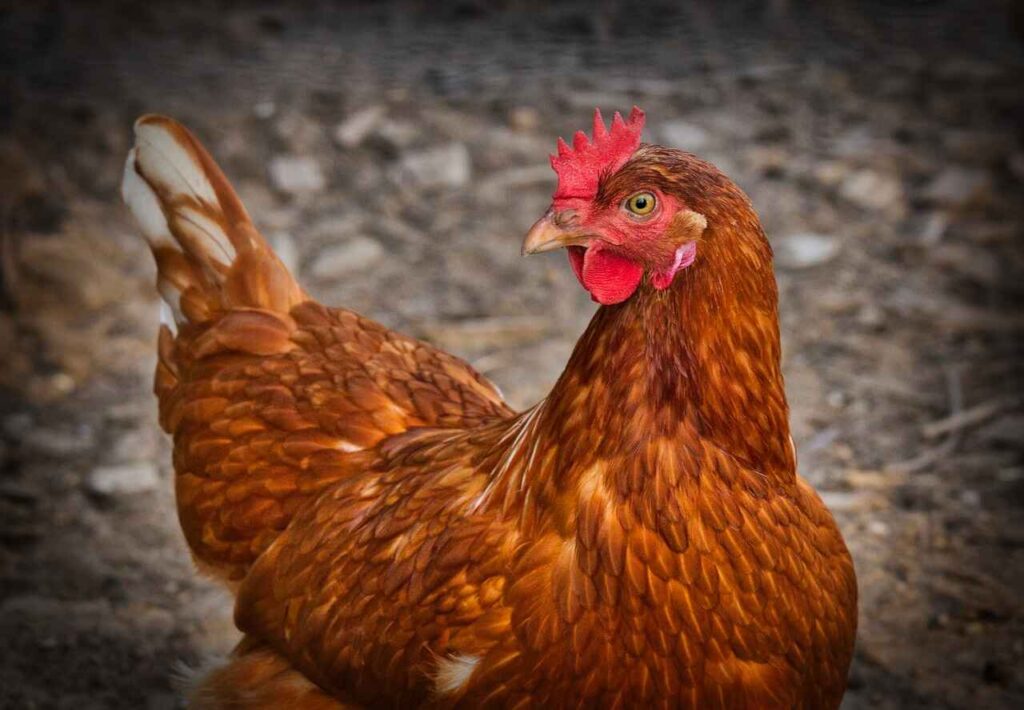
Summary
Yes, chickens can eat bell peppers as a healthy treat or supplementary food. The fruit, core, and seeds are safe and can be fed to your flock. However, avoid giving them the leaves, stems, and flowers, as these parts contain solanine, a toxic substance that can harm chickens. Properly preparing bell peppers ensures they remain a beneficial addition to your chickens’ diet.
